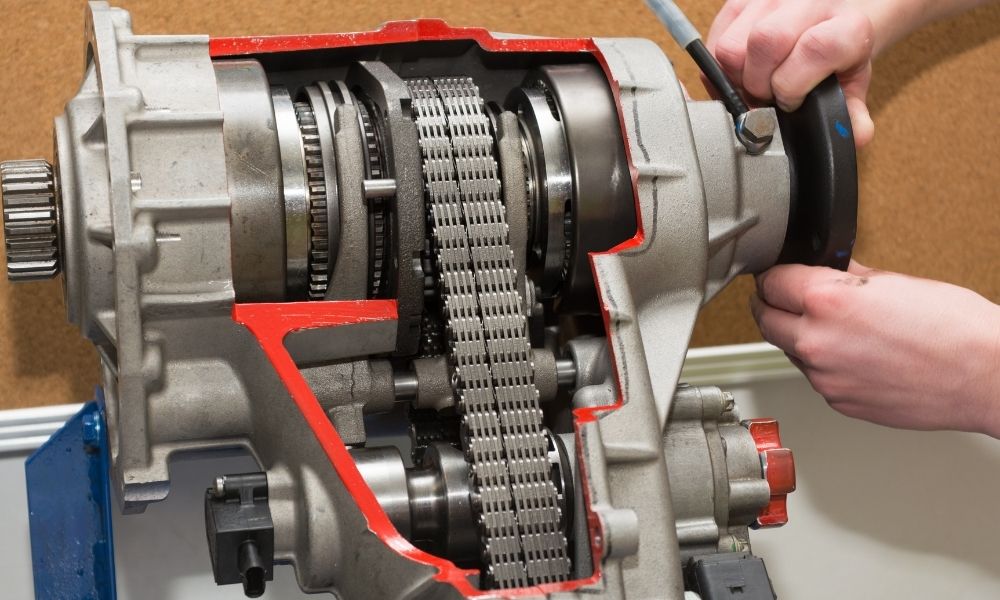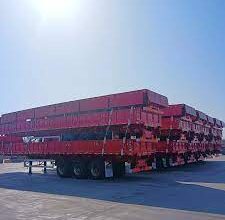Things You Need to Know When Buying Transfer Cases

A transfer case is a component commonly found in four-wheel drive (4WD) and all-wheel drive (AWD) vehicles. It distributes power from the engine to the front and rear axles, allowing torque to be sent to all four wheels simultaneously.
In a typical 4WD or AWD system, the transfer case is located between the transmission and the front and rear differentials. It receives power from the transmission and divides it between the front and rear axles according to the selected mode or the vehicle’s needs. The transfer case contains various gears and shafts that enable power distribution.
GMC transfer cases have different modes of operation, which can vary depending on the vehicle’s make and model. Some common modes include:
Two-wheel drive (2WD): In this mode, the transfer case disengages the power to the front wheels, and the vehicle operates in a rear-wheel drive configuration. This mode is typically used for normal driving conditions on paved roads.
Four-wheel drive high (4WD High): This mode engages the transfer case to distribute power equally to the front and rear axles. It provides better traction and stability in off-road or slippery conditions. It is commonly used when driving on unpaved roads or in light off-road situations.
Four-wheel drive low (4WD Low): This mode provides maximum torque multiplication for challenging off-road conditions, such as steep inclines, deep mud, or rock crawling. It reduces the vehicle’s speed but increases its crawling ability and torque output.
Auto/Full-time 4WD: Some vehicles have an automatic or full-time 4WD mode, where the transfer case continuously adjusts the power distribution between the front and rear axles based on traction needs. This mode suits varied driving conditions where the system can adapt to changing road or terrain conditions.
What is the Role of Transfer Cases?
The primary role of a transfer case in a four-wheel drive (4WD) or all-wheel drive (AWD) vehicle is to distribute power from the engine to the front and rear axles. It is vital in transferring torque to all four wheels simultaneously, enabling improved traction and control in various driving conditions.
Here are the key roles and functions of a transfer case:
Power Distribution: The transfer case receives power from the transmission and splits it between the front and rear axles. It ensures that torque is distributed evenly or according to the selected mode, allowing power to be sent to all wheels simultaneously.
Four-Wheel Drive Operation: The transfer case enables the engagement and disengagement of the vehicle’s 4WD system. By selecting the appropriate mode, such as 2WD, 4WD High, or 4WD Low, the transfer case controls how power is distributed to the wheels based on the driver’s requirements and the road or terrain conditions.
Traction Enhancement: In off-road or slippery conditions, a transfer case plays a crucial role in enhancing traction. Distributing power to all four wheels improves the vehicle’s ability to grip the road or terrain, reducing the chances of wheelspin and improving stability and control.
Torque Management: Transfer cases often incorporate different gear ratios, allowing the driver to choose between high and low ranges. The low range (4WD Low) increases torque multiplication, enabling the vehicle to traverse steep inclines, challenging terrain, and obstacles with greater ease.
Adaptability to Driving Conditions: Transfer cases can have different modes, including full-time 4WD or automatic systems. Such systems monitor the traction of each wheel and adjust power distribution accordingly. This adaptability allows the vehicle to optimize traction in real-time, enhancing safety and performance in varied driving conditions.
When choosing a transfer case for your vehicle, it’s important to consider several factors to ensure it meets your specific needs and driving requirements. Here are some tips to help you make an informed decision:
Driving Needs: Consider your typical driving conditions and requirements. If you frequently encounter off-road terrain or challenging conditions, opt for a transfer case with features like low range (4WD Low) for enhanced torque and traction. A transfer case with a selectable 4WD High mode might be sufficient for primarily on-road driving with occasional light off-roading.
Gear Ratios: Transfer cases have different gear ratios, which affect torque multiplication and crawling ability. Lower gear ratios provide more torque at the wheels, enhancing off-road performance. If you plan to engage in serious off-roading or rock crawling, look for a transfer case with lower gear ratios. For general-purpose use, a transfer case with standard gear ratios should suffice.
Ease of Use: Consider the user-friendliness of the transfer case system. Some transfer cases feature manual shifting mechanisms, while others have electronic controls or automatic modes. Choose a system that you are comfortable with and matches your preferences. Electronic systems offer convenience and ease of use, while manual systems may provide more direct control.
Reliability and Durability: Look for a transfer case known for its reliability and durability. Read customer reviews and consider the reputation of the manufacturer. A robust transfer case is essential for withstanding the demands of off-road driving and ensuring long-term performance.
Seek Expert Advice: If you’re unsure about the right transfer case for your vehicle, consult with automotive experts, such as mechanics, off-road enthusiasts, or specialty shops. They can provide valuable insights, recommend suitable options, and address any specific concerns you may have.
Budget Considerations: Transfer cases vary in price based on their features and quality. Set a budget range and consider options within that range while still meeting your requirements. Investing in a reliable, high-quality transfer case can improve long-term satisfaction and performance.
Finally, the transfer case is a critical component that enables a 4WD or AWD vehicle to distribute power to all four wheels effectively. It enhances traction, stability, and control, making it suitable for off-road adventures, challenging terrain, and situations where improved grip is necessary.




